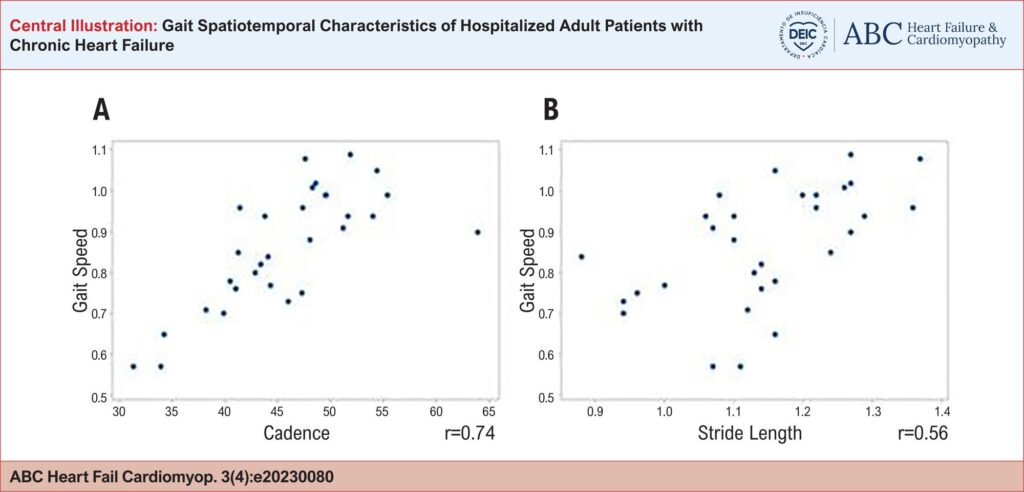ABC Heart Fail Cardiomyop 2023; 3(4): e20230080
Gait Spatiotemporal Characteristics of Hospitalized Adult Patients with Chronic Heart Failure
Abstract
Background:
Patients with chronic heart failure (CHF) have a decreased ability to walk, which has been related to the occurrence of hospitalizations and mortality and appears to be associated with the severity of the disease.
Objective:
To describe spatiotemporal gait characteristics of adult patients hospitalized with CHF.
Method:
Cross-sectional observational study. Participants diagnosed with CHF, between 18 and 60 years old, functional classification II and III, who were medically authorized to walk as prescribed in their medical records, were included. The walking cycle was based on a distance of 10 meters in a flat, marked corridor.
Results:
30 individuals participated in the study. The sample was mostly composed of females (n=17; 56.7%) with an average age of 44.5 years. The main etiology was valvular heart disease (n=15;50%), with an average ejection fraction of 44.6%. A strong correlation was observed between gait speed and cadence (r=0.74; p<0.01)) and a moderate correlation between gait speed and stride length (r=0.56; p<0.01). Regarding gait speed, 36.6% of those assessed had values less than or equal to 0.8 meters/second, while 16.6% obtained results above 1m/s.
Conclusion:
A strong correlation was observed between walking speed and cadence, and a moderate correlation between walking speed and stride length. The other gait parameters were not correlated with each other. According to what was observed in the literature, speed, cadence, stride length, and swing phase were reduced, while there was a slight increase in the stance phase when compared to healthy individuals.
Keywords: Heart Diseases; Heart Failure; Spatio-Temporal Analysis; Walking Speed
547


